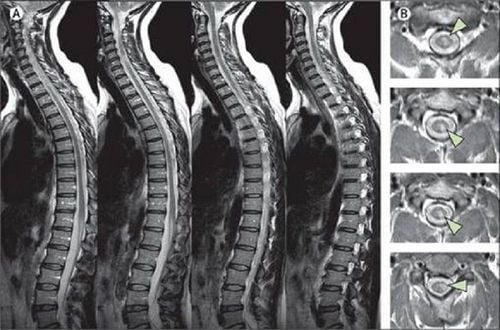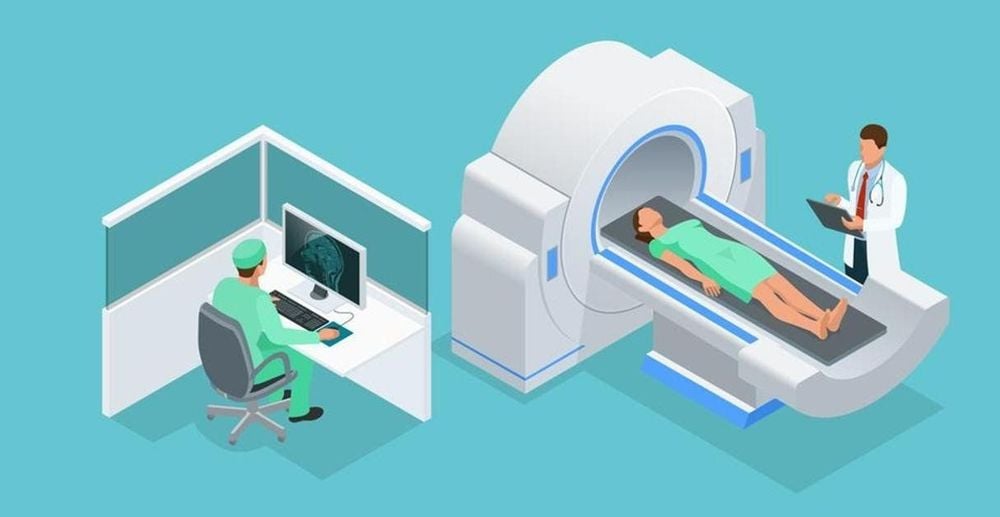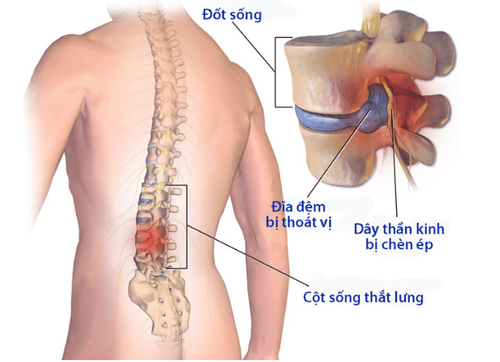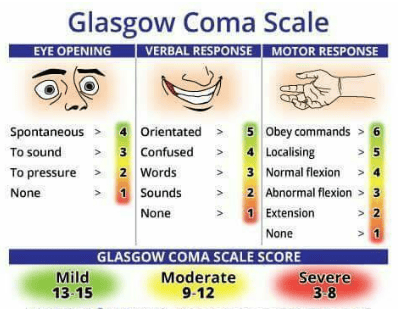This is an automatically translated article.
The article was written by Dr. BS Pham Quoc Thanh and Doctor Doan Xuan Sinh - Department of Diagnostic Imaging - Vinmec Hai Phong International General Hospital.An MRI scan provides images that are different from other imaging tests such as an X-ray, ultrasound, or CT scan. An MRI of the lumbar spine shows the bones, discs, spinal cord, and the space between the vertebrae where nerves pass.
1. What is magnetic resonance imaging of the lumbar spine?
Magnetic resonance imaging (MRI) is a noninvasive test used for medical diagnosis. An MRI uses a strong magnetic field, radio waves, and a computer to create detailed images of internal body structures. An MRI does not use radiation (X-rays).
Detailed MRI images allow doctors to examine the body and detect diseases. The images can be viewed on a computer screen. They can also be sent electronically, printed or copied to a CD, or uploaded to a digital cloud server. Currently, MRI is the most sensitive imaging test for the evaluation of lumbar spine pathologies.

Chụp MRI cột sống thắt lưng giúp chẩn đoán các bệnh về cột sống thắt lưng
2. Why should you have an MRI of the lumbar spine?
Get an MRI to better diagnose or treat problems with your spine. Your doctor may order a low back MRI if you have the following symptoms:
Unusual pain in the spine, which is sudden or persistent. Pain from the lower back radiating down the legs. Limit bending and turning movements. There is a curvature or deformity of the spine. After injuries, falls, contusions to the lumbar spine area. Presence of unexplained tumour. Presence of an inflammatory mass. Weakness, sensory disturbances slowly or suddenly from the waist down to the lower extremities. Sphincter dysfunction (urinary, defecation) and genitourinary function. Abnormalities on X-ray film of the lumbar spine (collapse, dislocation, displacement of the vertebrae...). Monitor complications and abnormalities after intervention on the lumbar spine. Your doctor may also order an MRI of your lower back if you're scheduled to have spine surgery. A lumbar MRI will help them plan the procedure before surgery.
3. Preparing for magnetic resonance imaging of the lumbar spine?
Before the scan you are changed into an MRI patient gown, you can also put on your own clothes if it is not metal. You can eat and drink normally before the lumbar spine MRI.
If contrast injection is required, you will be asked to answer several test questions using contrast injection. such as history of drug allergies, seasonal allergies, kidney diseases. You may need blood tests to determine if your kidneys are working properly.
Infants and young children often require sedation or anesthesia to complete the MRI examination. This depends on the age of the child, intellectual development. Some facilities may have staff members who work with children to help avoid the need for anesthesia or sedation.
Remove all jewelry and metal objects before the MRI scan. These items include:
Jewelry, watches, credit cards and hearing aids, all of which can be damaged Pins, hairpins, metal zippers and similar metal items, can disfigure MRI image format Orthodontic instruments Pens, pocket knives and eyeglasses Body piercings Cell phones, electronic watches and monitoring devices In most cases, an MRI examination is safe for patients with metal implants, with some exceptions. People with the following implants may not be scanned and should not enter the MRI scanning area without first being evaluated for safety:
Some cochlear (ear) implants Certain types of clips are used for aneurysms brain arteries Certain types of metal coils placed in blood vessels Some older defibrillators and pacemakers Tell the technician or radiologist about any shrapnel, bullets, or other metal may be in your body. Foreign objects near and especially in the eye are important because they can move or heat up during the scan and cause blindness. The dye used in tattoos may contain iron and may heat up during an MRI scan. This is rare. Fillings, braces, eyeshadows and other cosmetics are generally unaffected by magnetic fields. However, they can distort images of the face or brain area. Tell the radiologist about them.
Anyone accompanying the patient into the clinic must also be examined for metal objects and implanted devices.

Bệnh nhân chụp MRI cần làm theo hướng dẫn của bác sĩ
4. Posture of the patient when taking an MRI
Standard posture of patients with MRI scan of the lumbar spine:
Lie on your back, arms down, legs straight. The head is fixed on the shooting table in the direction of the head foot. The spine is adjusted to the center of the table. The cushion below the knee is effective in reducing pain in patients with acute hernia.
5. During the MRI scan
Keep the body in a fixed position because moving it will easily distort the results of the scan or make the image not clear, affecting the doctor's reading of the results later.
The machine performs several scans, accompanied by noise, but the patient has been wearing earplugs so he will not feel any discomfort. The patient may feel some heat but will not experience any pain.
Depending on the model of the camera, the total time for each patient is about 30-60 minutes. If it is a modern machine, this time will be reduced, only 10-15 minutes.
6. Pros and cons of spinal magnetic resonance imaging?
6.1 Advantages
MRI is a non-invasive imaging technique that does not involve radiation exposure.
MRI images of the spine are clearer and more detailed than those obtained with other imaging methods. MRI can show spinal abnormalities, injuries, and diseases that may not be seen with other methods. MRI is the best method available to visualize the spinal cord and nerves.
MRI can detect abnormalities that may be obscured by bone using other imaging methods.
Contrasts are less likely to cause allergic reactions than contrast agents used for X-rays and CT scans.
MRI is useful for evaluating spinal cord injuries. It helps diagnose or rule out acute spinal cord compression when physical examination reveals muscle weakness or paralysis. MRI is the best method for evaluating ligament injuries.
MRI can detect subtle changes in the spine that could be an early sign of an infection or tumor. MRI is more sensitive than CT scans for evaluating tumors, abscesses, and other soft tissue masses near the spinal cord.
MRI is the preferred method for evaluating potential complications of surgery, including bleeding, scarring, infection, and re-occurrence of herniated discs.

Chụp cộng hưởng từ cột sống giúp chẩn đoán thoát vị đĩa đệm
6.2 Cons
Magnetic resonance imaging poses virtually no risk to the average patient when appropriate safety guidelines are followed.
Strong magnetic field is not harmful. However, it can cause implanted medical devices to malfunction or cause image distortion.
Nephrogenic systemic fibrosis is a recognized, but rare, complication associated with injection of gadolinium contrast. It usually occurs in patients with severe kidney disease. Your doctor will carefully evaluate your kidney function before considering contrast injection.
There is a very slight risk of allergic reactions if contrast materials are used. Such reactions are usually mild and controlled with medication. If you have an allergic reaction, your doctor will be available to assist immediately.
In Hai Phong, Vinmec International General Hospital is a reliable address for spinal magnetic resonance examination. The hospital is equipped with a 3.0 Tesla Magnetic Resonance Machine system, a team of qualified medical professionals. Highly qualified, wholeheartedly devoted to the patient.
Customers can go directly to Vinmec Hai Phong to visit or contact hotline 0225 7309 888 for support.
Articles refer to sources: radiologyinfo.org, medicalnewstoday.com, radiology.ucsf.edu














